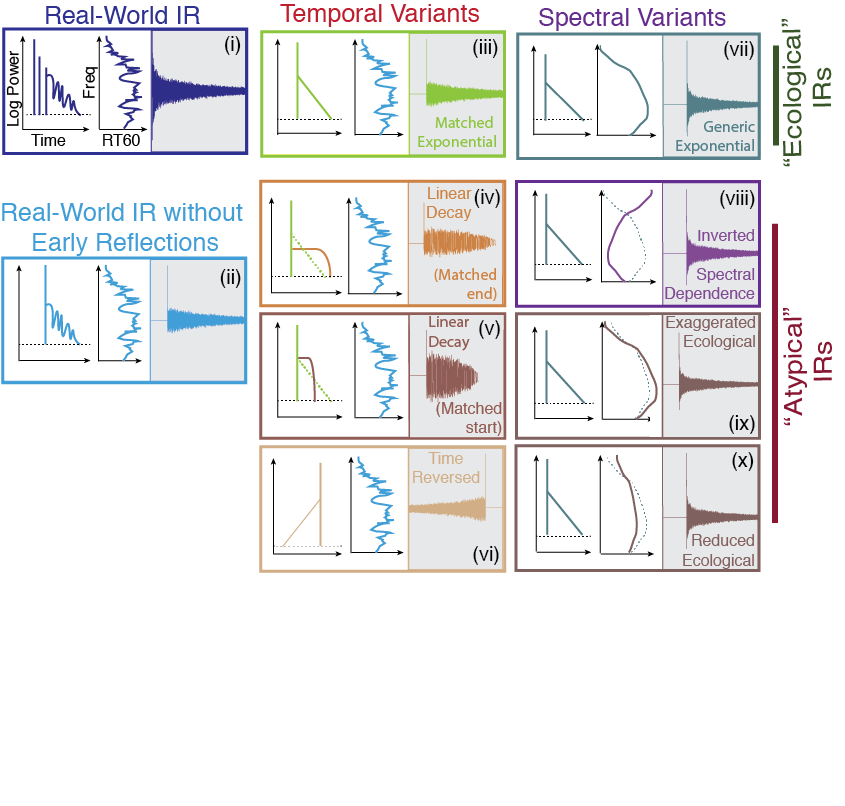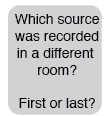Contents
- Example Impulse Responses
- Realism Experiment Stimuli (Exp 1)
- Source Discrimination Experiment Stimuli (Exp 2)
- Impulse Response Discrimination Experiment Stimuli (Exp 3)
Example Impulse Responses
| Room 1 (T=1.20s) | Room 2 (T=0.51s) | ||
| Real-World IR | With Early Reflections | ||
| Early Reflections Excised | |||
| Synthetic Impulse Responses | |||
| Temporal Variants | Matched Exponential | ||
| Linear Matched Start | |||
| Linear Matched End | |||
| Time Reversed | |||
| Spectral Variants | Generic Exponential | ||
| Inverted Spectral Dependence | |||
| Exaggerated | |||
| Reduced |

Realism Discrimination Stimuli (Exp 1)
These are example trials similar to those used in Experiment 1. The task is to determine which of the two sounds has real reverberation (i.e. it was recorded in a real room) and which had synthetic reverberation applied digitally. In these examples the synthetic Impulse Response is always applied to the second sound . Note that the Inverted Spectral Dependence IR results in a more intelligible signal because the distortion of the Impulse Response is concentrated in very high and low frequency channels and the mid-range frequencies (where much speech structure resides) is relatively clean. The task is not to understand speech but to judge which recording has realistic reverberation.
| IR source | Speech source | Synthetic source | ||
| Real-World IR | with vs without Early Reflections | |||
| Temporal Variants | Matched Exponential | |||
| Linear Matched Start | ||||
| Linear Matched End | ||||
| Time Reversed | ||||
| Spectral Variants | Generic Exponential | |||
| Inverted Spectral Dependence |

Source Discrimination Stimuli (Exp 2)
These are example trials similar to those used in Experiment 2 (600ms). The task is to disregard the filter and judge which sound source is different from the other two. In these examples the outlier source is always last. To correctly identify the outlier source subjects must correctly judge the first and second sounds as being identical sources with different reverberation.
| Example 1 | Example 2 | Example with randomized source |
|
| Dry | |||
| Generic Exponential | |||
| Inverted Spectral Dependence | |||
| Linear Matched Start | |||
| Linear Matched End | |||
| Time Reversed |

Impulse Response Discrimination Stimuli (Exp 2)
These are example trials similar to those used in Experiment 3. The task is to identify which of the three sounds has different reverberation from the other two. In these examples the outlier IR is always last. To correctly identify the outlier IR subjects must correctly judge the degree of reverberation present in each source.
| Generic Exponential | |
| Inverted Spectral Dependence | |
| Linear Matched Start | |
| Linear Matched End | |
| Time Reversed |

